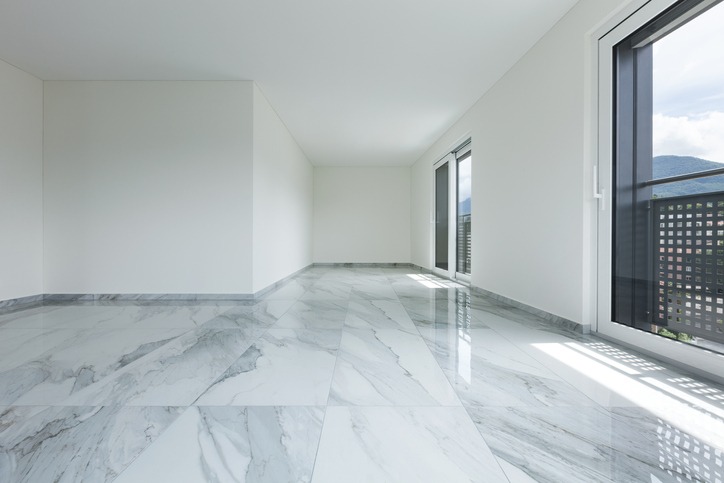You should always carefully consider your options when choosing a new tile for your home. Whether the tile is used for your walls, countertops, or floors, selecting the tile that will best serve your household is always an important decision. Because there are many types of tiles that are available for homeowners to choose from, it can be difficult to make a decisive decision on the one you want. There are many factors to consider when looking for tile, including cost, durability, style, and maintenance. Two types of tiles that are very popular and familiar among homeowners are both marble and porcelain tiles, but which one is best for a homeowner to install? Ascertaining which tile will provide the best appearance and usage for your home isn’t quite simple, and weighing out both advantages and disadvantages can help you choose between marble and porcelain.
Read on to learn more about marble and porcelain tile and which material can benefit your home.
Cost
Installing any type of new flooring will cost you, and getting marble and porcelain isn’t an exception to this rule. According to HomeAdviser, marble is one the most expensive tiles a homeowner can purchase. The price of marble tends to range from $5 to $15 per square foot, with installation costing around $4 to $9 per square foot. Unfortunately, broken marble tiles can be expected during installation, so you might have to pay for 10-20% more tiles than you initially expected. In contrast to marble, porcelain tiles can be a bit less costly to install.
Porcelain usually costs between $3 to $5 per square foot and $5 to $10 to install. Porcelain can be a bit more complicated to install as it cannot be placed onto wood flooring and will need cement backings, raising the total cost.
Maintenance
Although the smooth and effortless appearance of marble tile may seem like it could be a low-maintenance flooring to have, it can be quite the opposite. Because marble is a porous stone, it needs a sealant to be applied at least every six to 12 months to prevent stains and other incidents that can erode its appearance. More so, acidic substances, such as vinegar, can harm the finish of any sealant applied. Marble is also susceptible to cracks and chips, particularly if you run a vacuum over the tile or drop a hefty item on top of it. Because of the fragility of marble, it is best to place the marble in a room that receives less foot traffic than a room that does.
Porcelain, which can prove to be incredibly durable, contradicts the fragile nature of marble. Porcelain is made from clay and is incredibly solid, as well as stain-resistant and can be very easy to clean. Although, if you decide to get porcelain tile that is heavy on the texture, it can chip and crack easily and can be very hard to clean. When chipped, porcelain tile can be even more challenging to repair than repairing a damaged marble tile.
Installation
As previously mentioned, you can expect a couple of marble tiles to become damaged and even break during the installation process, which will inevitably lead to an increased cost. But marble tiles are actually easier to install than porcelain because they are lighter and more straightforward to implement into the floors. Porcelain tiles are heavy and special tools are usually required for installment; therefore, doing it yourself could be incredibly challenging and extra help might be needed.
Appearance
Marble has a renowned and compelling appearance that attracts many homeowners. Light marble flooring has become a timeless look that is found in many high-end homes and buildings. It exudes elegance and luxury that not many other tiles can attain. But porcelain is also an attractive flooring many homeowners choose for its versatile design. Porcelain tile can come in various designs, colours, styles, and textures, making it more customizable than marble at times. Porcelain can also assume a similar appearance as hardwood or stone but at a low price.
Conclusion
There is no precise winner when comparing the quality of both marble and porcelain tile. It mostly depends on what kind of flooring the homeowner is searching for. If a homeowner needs a durable yet inexpensive tile, then porcelain is the best option. But if another homeowner is seeking a tile for an appearance that is also easy to install, then marble is the suitable choice. Because both tile and marble have individual strengths, the best tile is ultimately up to the homeowner.

